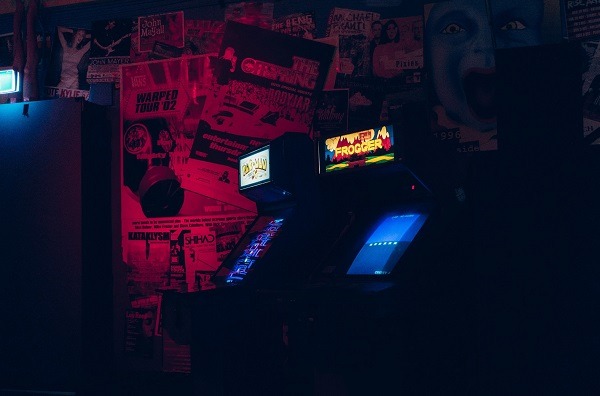Konami is particularly known for developing classic video game franchises like Metal Gear and Castlevania, but there is another iconic game in their lineup that people didn’t even know that the company owned when it was released in 1981, and that game is called Frogger.
In Frogger, one player takes control of a frog who is trying to cross the road from the bottom to the top, but getting to the top is not that easy, as the frog would need to avoid moving cars and try to hop on the back of turtles or on logs of wood without touching the water on the river. As the player progresses in Frogger, the levels will get harder and harder, with cars moving much faster than before, logs having snakes that can kill the frog in one hit, and crocodiles appearing on the river to stop the frog from reaching the finish line.
Frogger was one of the first games that incorporated difficulty spikes in gaming, and because of this innovation, many games today feature rising and spiking difficulty to challenge players to get better. To know more about road-crossing video games, here is a brief history of Frogger.
Humble Origins
In 1981, a video game developer for Konami named Akira Hashimoto got the concept for Frogger when he was in his car and waiting for the traffic light to turn green. During his wait, he saw a frog trying to cross to the other side of the road.
However, the frog was having difficulty crossing the road because of the vehicles that were passing through. Hashimoto then stopped his car on the side of the road and carried the frog to reach the other side. After helping the frog, the idea for Frogger immediately came to Hashimoto’s mind.
The Battle for Frogger
Hashimoto worked on developing Frogger and presented it to the executives at Konami. The company then showed it to Gremlin, which is a video game publisher that was acquired by Sega in 1978. Gremlin didn’t like the game at first, mainly because they believed that video games starring a frog as the protagonist wouldn’t sell well, and they already tried the concept for a game called Frogs that was released in 1978.
It would take a couple of weeks before Elizabeth Falconer, a market researcher for Gremlin, found Frogger in their library and suggested that it should be published. Falconer then learned that Gremlin executives rejected it, saying that the gameplay for Frogger is too “basic” and too “cute” for boys to play. Despite being rejected the first time, Falconer insisted that Frogger should be given a second chance.
She was eventually given a chance, but Frogger could only be published if she convinced the executives of Paramount, the company that owned Sega, that the game is fun to play. During the meeting with Paramount, one of the executives, Jack Cameron Gordon, didn’t read the pamphlet that Falconer distributed in the meeting and said that Frogger was already rejected because it is a game that only women and kids would play.
Instead of being upset, Falconer retorted by saying that these executives have rejected Pac-Man before, and the game became a hit even if they didn’t like its gameplay. After the retort, one of the executives was impressed with Falconer’s dedication to Frogger and allowed her and Sega to play-test a prototype for the game with a 60-day licensing window.
Sega paid Konami about $3,500 per day during the 60-day licensing window. The EPROMs (Erasable Programmable Read-Only Memory) for the game was then sent front Japan to America and was brought to Falconer to create the prototype arcade machine. The cabinet was then brought to a small bar called “Spanky’s Saloon,” which was situated in San Diego. Frogger than became one of the most popular games at the bar, prompting Gremlin to publish the game on October 23, 1981. European countries soon received arcade cabinets for Frogger on August 6, 1982.
Ports, Sequels, and Remakes for Frogger
Following the success of the Frogger arcade cabinet, Sega then began porting the game in different systems. Some of the first systems that received ports of Frogger were the Timex Sinclair 1000 and 2068, the TRS-80, and the Dragon 32. Sierra On-Line received the rights to publish Frogger for these consoles and others that are capable of reading magnetic media.
Besides home computers, Frogger also appeared in home consoles such as the Atari 2600, the ColecoVision, the Intellivision, and the Atari 5200. There was also a mini-arcade version of Frogger that was released by Coleco.
Over the years, there have been more than 20 sequels and remakes developed for the Frogger franchise, with some of the notable ones being the Frogger remake in 1997 for the Sony PlayStation and PC, Frogger 3D in 2011 for the Nintendo 3DS, and Frogger Free in 2012 for iOS and Android smartphones.


